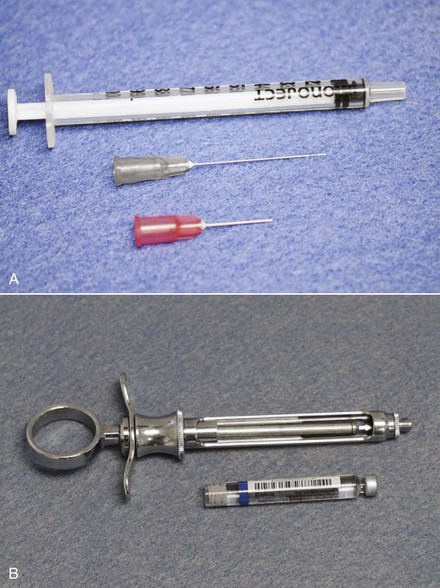5 Local Anesthesia
When you have completed this chapter, you will be able to:
• List possible reactions to local anesthetics used in veterinary dentistry.
• Describe the use of bupivacaine in veterinary dentistry and list time of onset of activity and duration of action for this drug.
• State maximum volumes of local anesthetics that should be administered to dogs and cats.
• Describe the purpose and procedure for performing an infiltration block.
• Describe the purpose and procedure for performing a regional anesthetic block.
• List the four anatomic areas where regional anesthesia is performed before veterinary dental procedures.
Infiltration Blocks
Equipment
A 25- or 27-gauge needle and a disposable syringe (Figure 5-1, A) are needed. Alternatively, a dental local anesthesia syringe can be used (Figure 5-1, B).

 hypodermic needles. The delivery site is premeasured to determine that the needle length will reach the site.
hypodermic needles. The delivery site is premeasured to determine that the needle length will reach the site.


